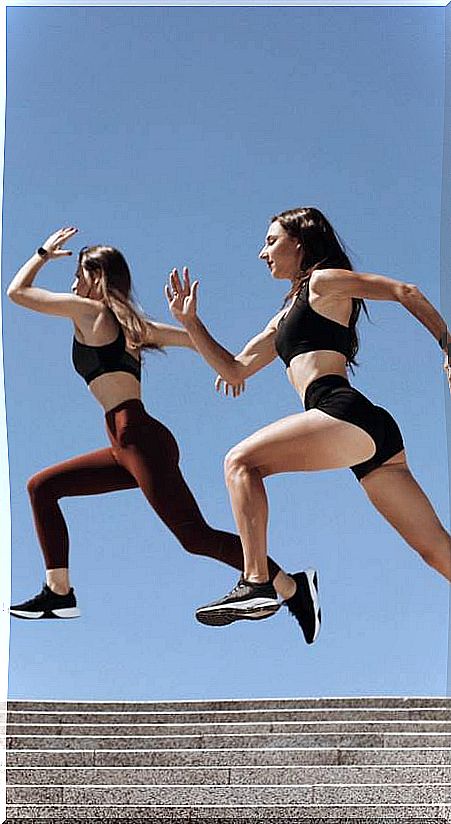11 Tips For Training In The Hot Summer
The heat is a challenge for people who exercise outdoors. It is convenient to take into account some tips to avoid taking risks and to get the most benefits from the physical activity session.

The motivation to exercise must be present at all times of the year. In summer we do not face the annoyance of the cold, but we do not have to run without taking precautions. Steps must be taken to prevent heat stroke, circulatory collapse, and other potential problems while exercising in the summer.
Tips for safe exercise in summer
1. Don’t get dehydrated
Dehydration is the most important risk when engaging in physical activity with high ambient temperatures.
Sports coaches recommend drinking up to half a liter of water an hour before starting and drinking a glass of water (between 200 and 300 ml) every 20 minutes if possible.
To make it more restorative, add a pinch of salt and a dash of lemon juice to the water.
2. Don’t train at noon
The sun reaches its zenith between 10 a.m. and 3 p.m., this is the warmest period and, therefore, it is unsuitable for training outdoors.
Doctors recommend planning bike tours and race tracks early in the morning or late in the afternoon.
At such times it is not only cooler, but the skin is not exposed to the sun when the ultraviolet radiation is strongest. If there is no other option than the central hours of the day, you should always choose routes that are in the shade.
3. Don’t forget the sunscreen
A sun protection factor of at least SPF 30 (better an SPF 50) prevents sunburn while running, skating or cycling.
An amount the size of a golf ball is sufficient to fully protect an adult’s body.
You should reapply cream every two hours, maybe even more often if your workout makes you sweat profusely.
It is essential that you also protect your head from the sun with a cap with a visor.
4. Wear sunglasses
It is very important that you protect your eyes from the sun. The polarized glasses prevent damage from ultraviolet radiation, which increase the risk of cataracts.
5. Acclimatization to avoid heat stroke
The approximately 658 heat deaths per year are preventable. Athletes who are out in the sun take risks, but those who simply relax in the pool are not immune to the heat, either.
It is advisable to increase the limit of tolerance to heat little by little acclimating the body, starting with very short workouts and increasing the time very slowly.
6. Group training
The symptoms of heat disturbances are much better controlled when playing sports in a group: you see them more clearly in your partners than in yourself.
Symptoms of dehydration are extreme fatigue, irritability, dizziness, nausea, headaches, and mental confusion.
Signs of heat stroke are exaggerated sweating, flushed skin, a racing pulse, and rapid breathing.
In addition, in case of any unforeseen event, you will always have your training partners to help you.
7. Know your training environment
After winter, the running routes in nature may have changed. The summer sun creates cracks in the ground, which now need to be paid special attention.
Before running down a route you haven’t been on in a while, inspect it while walking to see if things have changed on the ground that you wouldn’t see if you run.
8. Wear the right clothes
Ditch the fashions and wear the most appropriate clothing: being loose and breathable is essential to keep the body cool and dry during a workout.
Technical garments made of synthetic fabrics are often not the best choice because they are made of plastic materials that release them in the form of microparticles when washing.
Bet on garments made of natural fibers and a loose design.
9. Close your mouth when swimming
External ear infections, conjunctivitis and diarrhea are some diseases that can occur if you swim with your mouth open, because you make it very easy for the pathogens present in the water.
10. Slow down
Overheating dizziness can cause you to lose control of your bike. It is imperative to listen to your body and slow down if you feel something wrong. This applies equally to amateur and professional athletes.
11. Don’t forget to warm up and stretch
Stretches are important before and after a workout. At the end of the training the muscles are well supplied with blood and it is the most suitable time to stretch.
Before physical activity, however, it is better to warm up than to stretch. For this you can jog and do gymnastic exercises.









